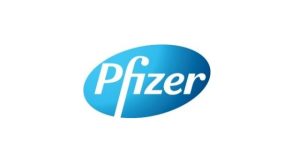Over 75% of Patients Still Benefit After PD-1 Inhibitor Therapy Progression!
- A Single US$2.15-Million Injection to Block 90% of Cancer Cell Formation
- WIV: Prevention of New Disease X and Investigation of the Origin of COVID-19
- Why Botulinum Toxin Reigns as One of the Deadliest Poisons?
- FDA Approves Pfizer’s One-Time Gene Therapy for Hemophilia B: $3.5 Million per Dose
- Aspirin: Study Finds Greater Benefits for These Colorectal Cancer Patients
- Cancer Can Occur Without Genetic Mutations?
Over 75% of Patients Still Benefit After PD-1 Inhibitor Therapy Progression!
- Red Yeast Rice Scare Grips Japan: Over 114 Hospitalized and 5 Deaths
- Long COVID Brain Fog: Blood-Brain Barrier Damage and Persistent Inflammation
- FDA has mandated a top-level black box warning for all marketed CAR-T therapies
- Can people with high blood pressure eat peanuts?
- What is the difference between dopamine and dobutamine?
- How long can the patient live after heart stent surgery?
“Cancer Cell”: Over 75% of Patients Still Benefit After PD-1 Inhibitor Therapy Progression!
The use of immune checkpoint inhibitors (ICIs), either alone or in combination, has become the standard treatment approach for most solid tumors.
ICIs exhibit a unique, long-tail response pattern, but a significant proportion of patients experience disease progression (PD).
The Response Evaluation Criteria in Solid Tumors (RECIST v1.1) is the standard for assessing patient responses to cytotoxic drugs, defining PD as tumor progression or the appearance of new lesions.
However, the response pattern of ICIs differs from cytotoxic drugs.
Some studies have found that in patients classified as having PD according to RECIST v1.1 after ICI treatment, there is a subset where tumor burden remains stable or even decreases.
PD is often driven by the growth of new or non-target lesions. Therefore, many PD patients actually continue to respond to ICI treatment.
Given the limitations of RECIST v1.1 in assessing ICI treatment responses, clinical trials typically allow patients to continue ICI treatment after initial PD.
In such cases, what is the benefit to patients? To address this question, Merck, in collaboration with Weill Cornell Medicine and the University of California, Los Angeles, among other research institutions, conducted a pooled analysis of data from solid tumor patients who continued treatment with pembrolizumab after experiencing PD.

The results indicate that 8.9-24.4% of patients still had at least a 30% reduction in lesion diameter at the advanced stage of disease progression, and 64.8-75.9% of patients had stable target lesions. These data suggest that continuing pembrolizumab treatment after PD is clinically meaningful for some patients. The study results were published in the Cancer Cell journal.
The study included 799 advanced-stage solid tumor patients who continued treatment after progression (TBP) from various clinical trials, including 176 melanoma, 146 non-small cell lung cancer (NSCLC), 87 gastric cancer (GC), 112 head and neck squamous cell carcinoma (HNSCC), 51 clear cell renal cell carcinoma (ccRCC), and 227 urothelial carcinoma (UC) cases. Post hoc analysis showed that TBP patients had superior overall best objective response (BOR) compared to discontinuation patients.
The study examined the proportion of patients in each tumor type with clinically significant growth (defined as a ≥20% increase in the sum of the diameters of target lesions at initial PD), clinically significant shrinkage (defined as a ≥30% decrease in the sum of the diameters of target lesions), stable target lesions (any change falling between the first two categories), and objective response rate (ORR).
Specifically, in NSCLC, for example, the KEYNOTE-001 trial included 296 PD patients, of whom 146 were TBP. Seventeen patients (11.6%) experienced clinically significant shrinkage of target lesions, with a median time to this endpoint of 9.4 weeks. Among these 17 patients, 4 achieved ORR, representing 2.8% of TBP patients, while the remaining 13 achieved BOR, with no progression of non-target lesions or new metastases.
Among the 146 TBP patients, 64 exhibited similar tumor dynamics before and after disease progression (growth-growth, stability-stability, shrinkage-shrinkage), while the remaining 82 showed significant changes, most commonly stable target lesions at the advanced stage of disease progression. The median duration of continued treatment after initial PD was 12.5 weeks, with 11.4 weeks for patients with stable target lesions, 43.9 weeks for those with a decrease in the sum of target lesion diameters, and 22.4 weeks for those achieving ORR.

New metastases were recorded for melanoma, NSCLC, HNSCC, ccRCC, and UC patients. In melanoma and NSCLC, approximately 48.9% and 39.0% of patients, respectively, had detectable new metastases, with roughly half of these showing stability, approximately 16% showing shrinkage, and the rest showing growth. Similar results were observed in HNSCC, ccRCC, and UC.
Based on these data, most TBP patients exhibited stable target lesion dynamics, with tumor growth occurring in a minority, which did not exceed 20% in any tumor type. This suggests that continuing pembrolizumab treatment after RECIST v1.1-defined disease progression may benefit a significant proportion of patients. When making clinical decisions, considerations should encompass potential benefits and risks, including tumor symptoms, adverse events, and economic burden.
In summary, this study provides baseline expectations for TBP in different tumor types among patients receiving PD-1 inhibitor therapy. It confirms that the majority of local tumors do not develop resistance when disease progression occurs. This knowledge may help more accurately assess treatment responses in clinical studies without applicable historical controls for new therapies in combination with PD-1 inhibitors and enhance our understanding of the biological mechanisms of ICI resistance.
References:
[1] Wolchok J D, Hoos A, O’Day S, et al. Guidelines for the evaluation of immune therapy activity in solid tumors: immune-related response criteria[J]. Clinical Cancer Research, 2009, 15: 7412-7420.
[2] Hodi F S, Hwu W J, Kefford R, et al. Evaluation of immune-related response criteria and RECIST v1.1 in patients with advanced melanoma treated with pembrolizumab[J]. Journal of Clinical Oncology, 2016, 34: 1510-1517.
[3] Topp B G, Thiagarajan K, De Alwis D P, et al. Lesion-level heterogeneity of radiologic progression in patients treated with pembrolizumab[J]. Annals of Oncology, 2021, 32: 1618-1625.
[4] Beaver J A, Hazarika M, Mulkey F, et al. Patients with melanoma treated with an anti-PD-1 antibody beyond RECIST progression: a US Food and Drug Administration pooled analysis[J]. Lancet Oncology, 2018, 19: 229-239.
[5] https://www.cell.com/cancer-cell/fulltext/S1535-6108(23)00280-5
Over 75% of Patients Still Benefit After PD-1 Inhibitor Therapy Progression!
(source:internet, reference only)
Disclaimer of medicaltrend.org
Important Note: The information provided is for informational purposes only and should not be considered as medical advice.



